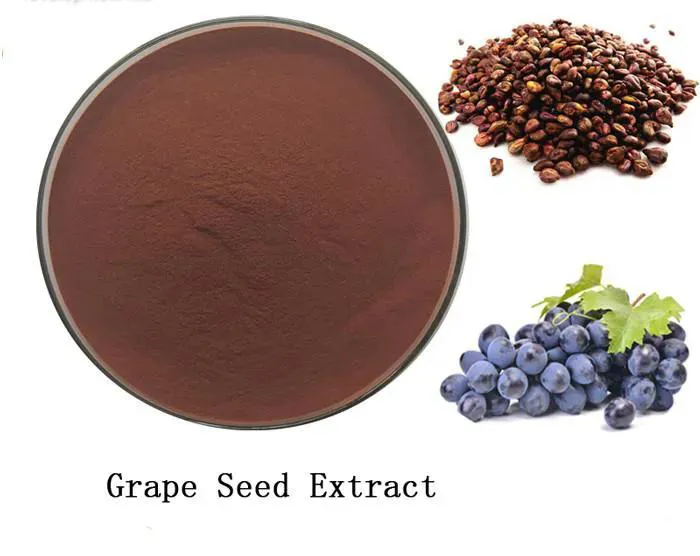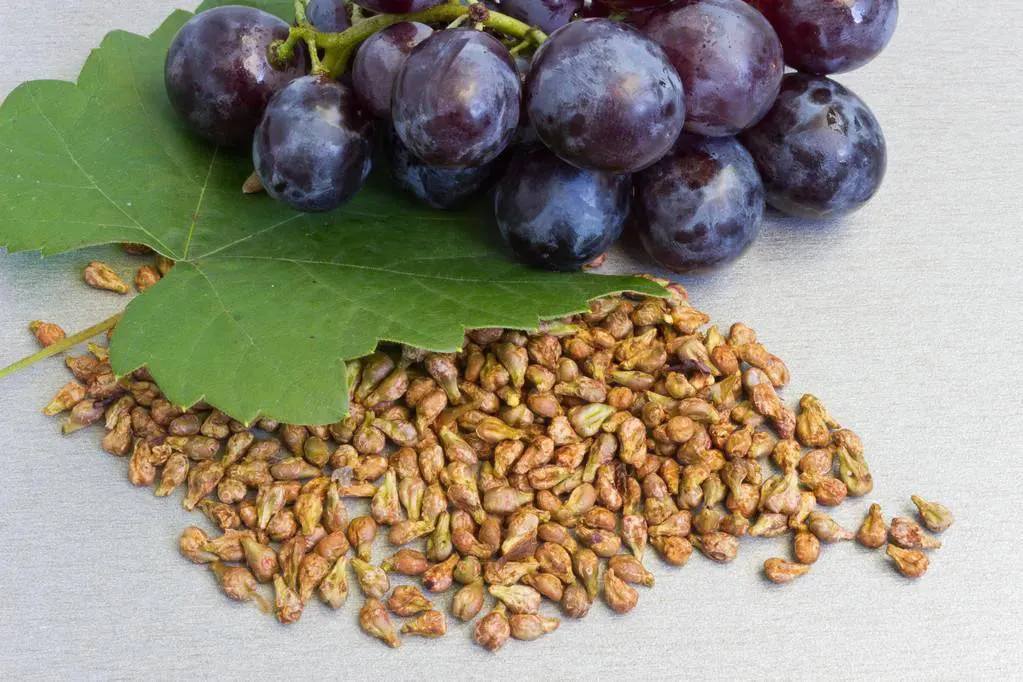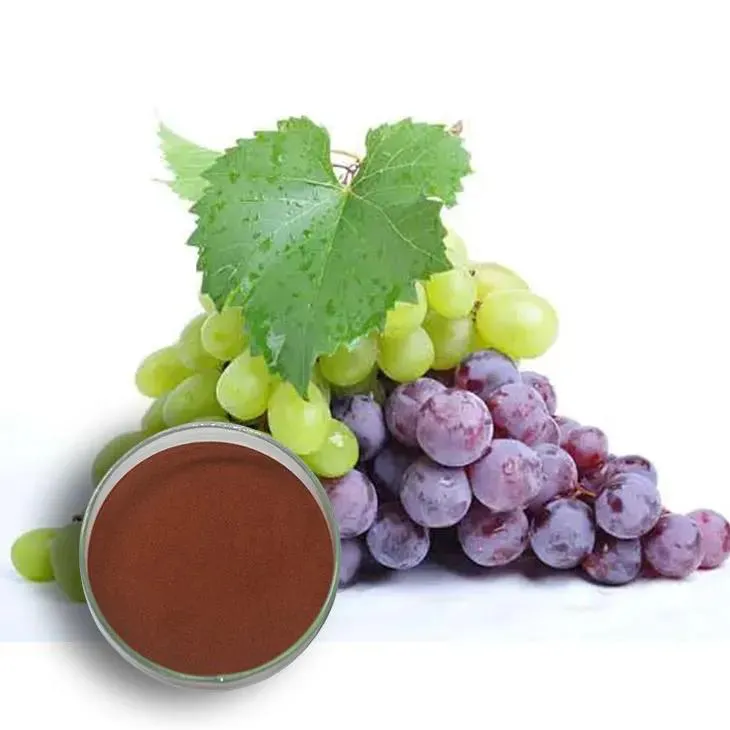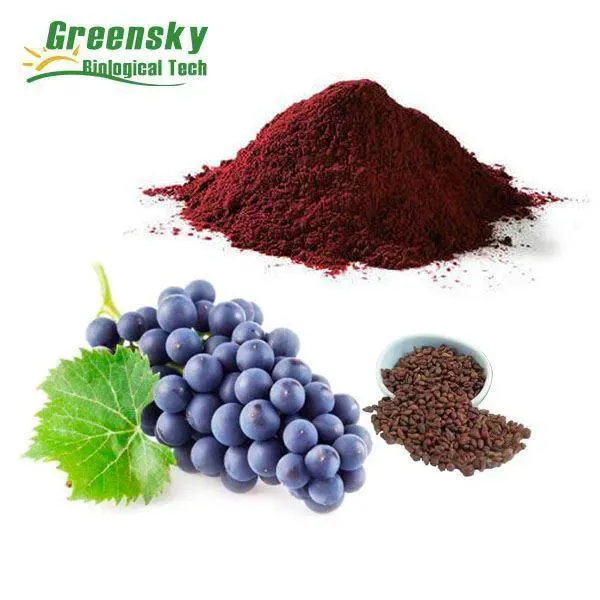- 0086-571-85302990
- sales@greenskybio.com
The Antioxidant Power of Grape Seed Extract: A Natural Solution for Seborrheic Dermatitis
2024-07-31

1. Introduction
Seborrheic dermatitis is a common skin condition that affects a significant number of people worldwide. It is characterized by red, itchy, and flaky skin, often occurring on the scalp, face, and other areas rich in sebaceous glands. Traditional treatments for seborrheic dermatitis include topical antifungal agents, corticosteroids, and anti - inflammatory medications. However, these treatments may have side effects, and some patients may be interested in more natural alternatives. Grape Seed Extract has recently gained attention as a potential natural remedy for various health conditions, including seborrheic dermatitis, due to its powerful antioxidant properties.

2. What is Grape Seed Extract?
Grape Seed Extract is derived from the seeds of grapes (Vitis vinifera). It is rich in bioactive compounds, particularly proanthocyanidins, which are a type of flavonoid. These proanthocyanidins are known for their antioxidant, anti - inflammatory, and antimicrobial properties. The antioxidant power of grape seed extract is much higher than that of vitamin C and vitamin E. It works by scavenging free radicals, which are unstable molecules that can cause damage to cells and tissues in the body, including the skin.

3. The Mechanisms of Grape Seed Extract in Seborrheic Dermatitis
3.1 Anti - Inflammatory Effects
Inflammation plays a crucial role in the development and progression of seborrheic dermatitis. Grape seed extract has been shown to inhibit the production of inflammatory mediators such as cytokines and prostaglandins. By reducing inflammation, it can help to relieve the redness, itching, and swelling associated with seborrheic dermatitis.
3.2 Antimicrobial Activity
Although the exact cause of seborrheic dermatitis is not fully understood, there is evidence to suggest that the overgrowth of certain fungi, such as Malassezia, may contribute to the condition. Grape seed extract has antimicrobial properties that can inhibit the growth of Malassezia and other potentially harmful microorganisms on the skin. This helps to restore the normal balance of the skin microbiota and reduce the symptoms of seborrheic dermatitis.
3.3 Antioxidant Protection
Free radicals can damage the skin cells and disrupt the skin's natural barrier function in seborrheic dermatitis. The antioxidants in grape seed extract can neutralize these free radicals, protecting the skin from oxidative stress. This not only helps to improve the overall health of the skin but also enhances the skin's ability to repair itself.

4. Benefits of Grape Seed Extract for Seborrheic Dermatitis
4.1 Symptom Relief
One of the most significant benefits of grape seed extract for seborrheic dermatitis is the relief of symptoms. Patients may experience a reduction in itching, redness, and flaking of the skin. This can improve their quality of life and reduce the discomfort associated with the condition.
4.2 Long - Term Skin Health
By addressing the underlying causes of seborrheic dermatitis, such as inflammation and oxidative stress, grape seed extract can contribute to the long - term health of the skin. It can help to prevent the recurrence of the condition and maintain the skin's normal function.
4.3 Natural and Safe Alternative
For those who are concerned about the side effects of traditional medications, grape seed extract offers a natural and relatively safe alternative. It is generally well - tolerated, although some individuals may experience mild side effects such as gastrointestinal upset in rare cases.

5. Possible Applications of Grape Seed Extract
5.1 Topical Application
Grape seed extract can be applied topically in the form of creams, lotions, or gels. These formulations can be directly applied to the affected areas of the skin, allowing the active compounds to penetrate and exert their effects. Many over - the - counter and natural skincare products now contain grape seed extract for seborrheic dermatitis treatment.
5.2 Oral Supplementation
In addition to topical application, oral supplementation with grape seed extract may also be beneficial. Oral supplements can provide systemic antioxidant and anti - inflammatory support, which can have a positive impact on seborrheic dermatitis. However, it is important to consult a healthcare provider before starting any oral supplementation, especially if the patient is taking other medications or has underlying health conditions.
6. Clinical Evidence
Although more research is needed, there are some clinical studies that suggest the effectiveness of grape seed extract in seborrheic dermatitis. For example, a small - scale study found that patients who used a topical grape seed extract formulation had a significant improvement in their seborrheic dermatitis symptoms compared to those who used a placebo. Another study showed that oral supplementation with grape seed extract, in combination with other natural compounds, was associated with a reduction in skin inflammation markers in patients with seborrheic dermatitis.
7. Considerations and Precautions
7.1 Allergic Reactions
Some individuals may be allergic to grape seed extract. Before using any product containing grape seed extract, it is advisable to perform a patch test on a small area of the skin to check for allergic reactions. Signs of an allergic reaction may include redness, itching, swelling, or hives.
7.2 Interaction with Medications
Grape seed extract may interact with certain medications, such as blood - thinning drugs and medications metabolized by the liver. If a patient is taking any medications, they should consult their healthcare provider before using grape seed extract to avoid potential interactions.
8. Conclusion
Grape seed extract shows great promise as a natural solution for seborrheic dermatitis. Its antioxidant, anti - inflammatory, and antimicrobial properties can help to combat the underlying causes of the condition and relieve symptoms. Whether applied topically or taken orally, it may offer a safe and effective alternative or complementary treatment for seborrheic dermatitis. However, more research is still needed to fully understand its mechanisms of action and to optimize its use in the treatment of this common skin condition. Patients considering using grape seed extract for seborrheic dermatitis should also be aware of the possible considerations and precautions to ensure its safe and effective use.
FAQ:
What is seborrheic dermatitis?
Seborrheic dermatitis is a common skin disorder that typically affects areas rich in sebaceous glands, such as the scalp, face, and upper chest. It is characterized by redness, flaking, and itching. The exact cause is not fully understood, but it is thought to be related to factors like an overgrowth of yeast on the skin, abnormal immune response, and genetic predisposition.
How does grape seed extract possess antioxidant properties?
Grape seed extract contains high levels of polyphenols, especially proanthocyanidins. These compounds are powerful antioxidants. They can neutralize free radicals in the body. Free radicals are unstable molecules that can cause damage to cells and tissues. The polyphenols in grape seed extract donate electrons to these free radicals, thereby stabilizing them and preventing oxidative stress.
What are the mechanisms by which grape seed extract combats seborrheic dermatitis?
One possible mechanism is its anti - inflammatory effect. The antioxidant properties of grape seed extract can reduce inflammation associated with seborrheic dermatitis. It may also have an impact on the yeast overgrowth often seen in this condition. By modulating the skin's immune response and reducing oxidative stress, it can help improve the symptoms of seborrheic dermatitis.
What are the benefits of using grape seed extract for seborrheic dermatitis?
The benefits include reduction of redness, itching, and flaking. It can potentially improve the overall appearance and health of the skin affected by seborrheic dermatitis. Since it is a natural remedy, it may also have fewer side effects compared to some conventional medications.
How can grape seed extract be applied for seborrheic dermatitis?
It can be applied topically in the form of creams or ointments containing grape seed extract. Some people may also take it orally in the form of supplements. However, it is important to consult a healthcare provider before starting any new treatment, especially if taking it orally, to ensure safety and proper dosage.
Related literature
- The Role of Antioxidants in Skin Health and Disease"
- "Natural Remedies for Skin Disorders: Grape Seed Extract and Beyond"
- "Seborrheic Dermatitis: New Insights into Pathogenesis and Treatment"
- ▶ Hesperidin
- ▶ Citrus Bioflavonoids
- ▶ Plant Extract
- ▶ lycopene
- ▶ Diosmin
- ▶ Grape seed extract
- ▶ Sea buckthorn Juice Powder
- ▶ Fruit Juice Powder
- ▶ Hops Extract
- ▶ Artichoke Extract
- ▶ Mushroom extract
- ▶ Astaxanthin
- ▶ Green Tea Extract
- ▶ Curcumin
- ▶ Horse Chestnut Extract
- ▶ Other Product
- ▶ Boswellia Serrata Extract
- ▶ Resveratrol
- ▶ Marigold Extract
- ▶ Grape Leaf Extract
- ▶ New Product
- ▶ Aminolevulinic acid
- ▶ Cranberry Extract
- ▶ Red Yeast Rice
- ▶ Red Wine Extract
-
Red Wine Extract
2024-07-31
-
Curcuma Longa Extract/Turmeric extract
2024-07-31
-
Wheat Germ Extract
2024-07-31
-
Medicinal Marshmallow Extract
2024-07-31
-
Curcumin Extract
2024-07-31
-
Honeysuckle Pollen
2024-07-31
-
Acerola Juice Powder
2024-07-31
-
Yellow Pine Extract
2024-07-31
-
Citrus bioflavonoids
2024-07-31
-
Licorice Root Extract Powder
2024-07-31





















